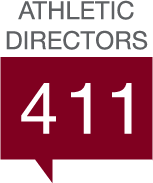In a landmark decision, the NCAA has lifted its long-standing eligibility ban on Canadian Hockey League (CHL) players, allowing them to compete in NCAA Division I hockey starting August 1, 2025. This shift grants NCAA programs access to a new pool of talented players who previously had to choose between competing in the CHL or pursuing college hockey. The rule change also applies to skiing, aligning both sports with eligibility rules for other NCAA sports.
The ban had originally deemed CHL players “professional” athletes due to a stipend of up to $600 per month they receive for living expenses. By lifting this restriction, the NCAA Division I Council has potentially changed the future of college hockey and expanded the talent pipeline in significant ways.
Strategic Opportunities for Athletic Directors
For athletic directors (ADs) overseeing hockey programs, this change presents new recruitment avenues, competitive challenges, and financial implications that will shape the future of NCAA hockey. Below are key points ADs should consider:
Access to a Broader Talent Pool
The CHL, encompassing Canada’s top junior hockey leagues (the Ontario Hockey League, Quebec Major Junior Hockey League, and Western Hockey League), has long been a top source of NHL talent. Until now, players in these leagues faced ineligibility if they wanted to join NCAA teams. Lifting the ban allows NCAA programs to recruit from this deepening talent pool, drawing players who may have once chosen the CHL over college hockey to remain on the NCAA path. This expanded pool could lead to a more competitive and diverse playing field, benefiting college hockey programs that actively engage in recruiting these players.
Changes to the Recruiting Landscape
The CHL’s newfound eligibility shifts the recruiting landscape, particularly in the United States Hockey League (USHL): currently the primary junior league feeding into the NCAA. With CHL players now able to maintain college eligibility, players who might have chosen the USHL to keep NCAA options open may instead stay in Canada, reducing the number of players entering the USHL. Athletic directors should work closely with recruiting coordinators to adjust scouting and recruiting strategies, prioritizing relationships with CHL-affiliated coaches and understanding the unique appeals for players balancing NCAA and CHL opportunities.
Enhanced NIL and Revenue Potential
With the recent growth of Name, Image and Likeness (NIL) opportunities, CHL players joining NCAA teams could bring increased visibility and marketing potential, enhancing overall revenue for athletic programs. CHL players often have established reputations and strong followings due to their high-level junior league experience, which can translate into NIL opportunities. ADs can position their programs as ideal environments for CHL players by developing NIL programs that include guidance on monetizing their NIL rights in compliance with NCAA rules. This can be especially appealing for young Canadian players interested in building their personal brands alongside their athletic careers.
Impact on U.S. Athletes and Existing Rosters
Bringing CHL players into NCAA programs will add depth to college hockey rosters, but it also may limit opportunities for American players who have traditionally filled these spots. ADs should carefully evaluate the balance of international and domestic players on their rosters to ensure a competitive yet inclusive team environment. It will be essential to consider how CHL players fit within the existing team culture and assess potential impacts on current recruitment pipelines and scholarships for U.S. athletes.
Legal and Financial Considerations
The rule change was preceded by a class-action lawsuit filed in August 2024, challenging the NCAA’s ban on CHL players as a violation of antitrust laws. This lawsuit, still ongoing, may lead to financial consequences for the NCAA, as plaintiffs seek damages for previous CHL players denied college eligibility. ADs should stay informed about the lawsuit’s progress, as it could set further precedents that may impact eligibility and compensation policies in other sports. Additionally, ADs should engage with legal and compliance teams to address any potential impacts on program funding or future eligibility standards.
Opportunities for Program Growth and Expansion
This decision could enhance the overall competitiveness of NCAA Division I hockey, possibly leading to increased interest in college hockey programs. With more CHL players entering the NCAA, demand for high-quality hockey programs may rise, prompting universities to invest in their hockey infrastructure or even establish new programs. ADs in schools without hockey programs may use this opportunity to advocate for program expansion, capitalizing on the influx of talent and fan interest that an expanded talent pool may bring.
Preparing for a New Era in College Hockey
The NCAA’s decision represents a transformative shift in the development paths available to young hockey players. Athletic directors should take a proactive approach to adapt to these changes and capitalize on the expanded recruiting possibilities. Key actions for ADs might include:
- Strengthening Recruiting Networks: Building connections with CHL teams and coaches will be critical for ADs to secure talented recruits from Canada’s top junior leagues. This can position NCAA programs as attractive destinations for CHL players seeking both academic and athletic opportunities.
- Developing NIL Support Systems: Ensuring that CHL recruits are well-informed about NIL rights and that strong NIL support structures are in place can make programs more attractive to players accustomed to some level of compensation.
- Promoting the Value of the Collegiate Experience: Emphasizing the unique combination of competitive athletics, built-in community and academic achievement that NCAA programs offer can help attract CHL players who prioritize education alongside athletic development.
As the NCAA embraces this new direction, athletic directors have an opportunity to shape the next generation of NCAA hockey. By adapting their strategies and recruiting practices, ADs can strengthen their programs, enhance athlete development and contribute to a more competitive collegiate hockey landscape.




